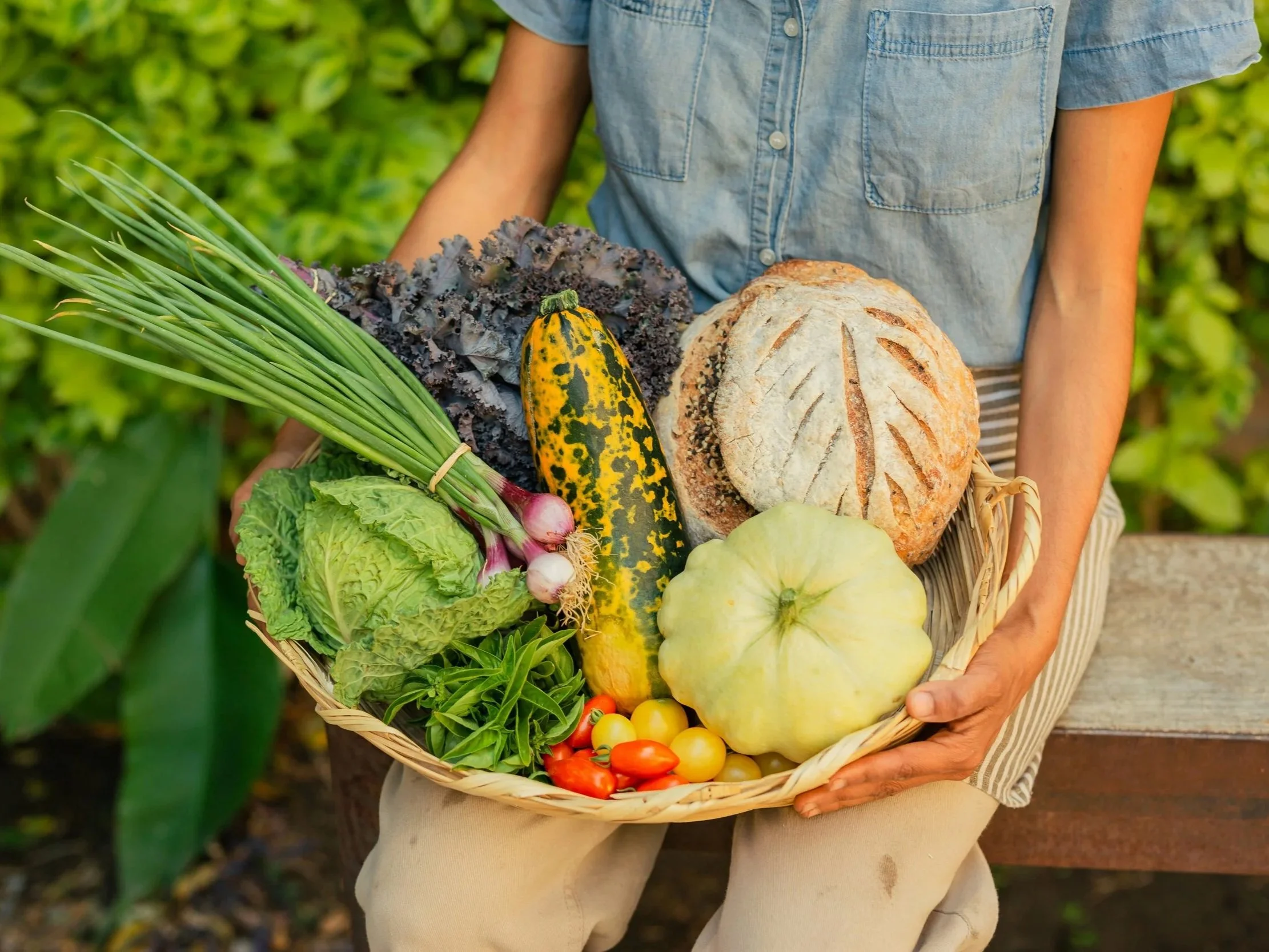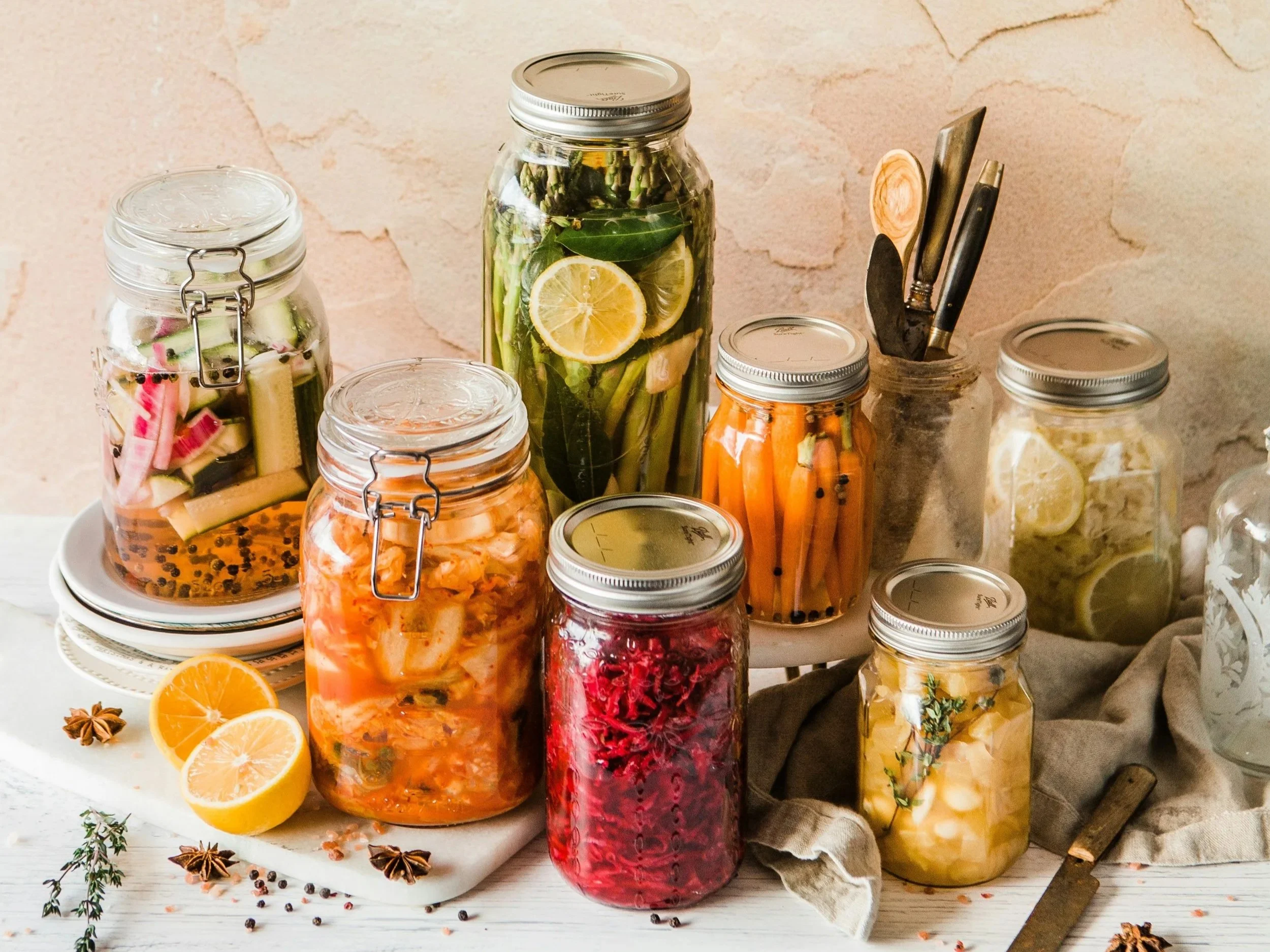Can You Increase GLP-1 Naturally?
By now, you probably know about GLP-1 medications like Ozempic or Wegovy. These medications are the subject of much debate, and for good reason!
GLP-1s were introduced as a way to treat diabetes patients, helping patients’ bodies regulate blood sugar.
Researchers quickly discovered that GLP-1s also have a significant impact on digestion and appetite, and the medications were approved in 2023 by the FDA for weight loss treatment.
GLP-1 medications are amazing tools, but like we emphasize all the time, you still need to be doing the work behind the scenes to have any lasting or sustainable weight loss results.
So that got us thinking, is there a way to boost GLP-1 production naturally?
The answer is yes!
Explore how you can make changes to your own lifestyle to increase GLP-1 production naturally, or help your medication work even better for you.
What is GLP-1?
Glucagon-like peptide-1 is a naturally occurring hormone produced by your intestine during digestion.
Simply put, when you consume food, that food triggers GLP-1 production.
GLP-1 plays a key role in a few crucial aspects of digestion:
GLP-1 triggers insulin production, which in turn regulates and lowers blood sugar levels.
GLP-1 controls glucagon, a hormone that raises blood sugar levels, further regulating your blood sugar.
GLP-1 slows gastric emptying, which is a fancy way of saying that it slows down how quickly food leaves your stomach. This both prevents blood sugar from spiking, and helps trigger satiety in your brain, making you feel fuller longer.
Understanding how GLP-1 effects the body and brain can help you to better understand how this hormone can help diabetes patients and triggers weight loss.
But less is known about how your body, lifestyle, and habits effect GLP-1.
How the Gut Microbiome Influences GLP-1s
We talked about how food can trigger GLP-1 production, but it’s not just the presence of food in the stomach, it’s also the diverse microbiome that interacts with the food you eat.
Your gut is actually home to trillions of microorganisms (good bacteria) that make up what we call the gut microbiome.
These bacteria help to break down food that enters the stomach, and the byproducts of their digestion process, called metabolites, are part of what triggers the release of GLP-1, as well as many other digestive hormones.
Here are 5 examples of metabolites that stimulate GLP-1 production and where they come from:
Short-Chain Fatty Acids: created when gut bacteria break down fiber.
Indoles: tryptophan, an amino acid in protein-rich foods, is converted to indoles which trigger GLP-1 release.
Monoglyceride (2-Oleoyl glycerol): a byproduct of breaking down dietary fat.
Secondary bile acids: produced by the liver to digest dietary fat, and are transformed by gut bacteria to control GLP-1 release.
LPS: found on the outer membrane of gut bacteria and released when the bacteria die. LPS can activate GLP-1, but can also lead to inflammation when levels are elevated.
This is a lot of information to take in, but you don’t really need to know the precise functions of the gut microbiome in order to improve its function.
In fact, it’s actually quite simple— no really!
Natural Ways to Boost GLP-1 Production
If you haven’t gathered by now, boosting GLP-1 production naturally means taking care of those gut bacteria that help with digestion. Basically, you want to create a healthy environment for the bacteria to live in, and give them plenty of fuel to eat.
Besides your gut bacteria, the type and quality of food you eat can help to slow digestion, triggering your body to produce higher amounts of GLP-1.
Finally, your lifestyle plays a big role in GLP-1 production, including sleep and exercise.
Diet
As a general rule, a balanced diet consists of protein, healthy fats, and fiber.
The easiest way to ensure you are getting all of these components is by eating a variety of fresh foods including lean meats, fish, fresh fruits and veggies, whole grains, legumes, nuts, and seeds.
Foods that take longer to digest will stimulate more GLP-1 production. Foods that are digested quickly include ultra-processed foods and foods high in refined flour or sugar.
Indulge in these foods sparingly and focus on what you can add to your diet to help your gut microbiome thrive.
Eat More Protein
Protein is made of of amino acids, which the body uses to build and repair muscle tissue, give you energy, and regulate hormones.
Certain amino acids, such as tryptophan, stimulate GLP-1 production.
You should try to eat protein with every meal, not just for GLP-1 production, but because it keeps you satiated and regulates your blood sugar, preventing the urge to snack between meals.
Here are some examples of protein-rich foods that are especially high in tryptophan:
Turkey and chicken
Greek yogurt
Eggs
Cheese, especially cheddar and mozzarella
Fish
Nuts and seeds
Legumes
Bonus— tryptophan also regulates serotonin and melatonin production, helping you to sleep better too!
Eat More Healthy Fats
Dietary fat provides energy and helps our bodies to absorb important fat soluble micronutrients like vitamins A, D, and E. It also slows down digestion stimulating GLP-1 production.
Earlier, we mentioned a monoglyceride called 2-Oleoyl Glycerol (2-OG), a byproduct of breaking down dietary fat that promotes GLP-1 production.
Try some of these foods which are rich in 2-OG:
Olive oil
Avocado
Nuts and seeds
Animal fats
Fatty fish
Certain plant oils like canola and sunflower oil
Bonus— combing fats and proteins in a meal slows down digestion and triggers major satiety signals, helping you feel fuller longer and cut back on snacking!
Focus on High-Fiber, Low-Glycemic Foods
Fiber gives you energy, promotes regularity of your bowel movements, and is perhaps the most important ingredient to support your gut microbiome.
Fiber actually isn’t broken down by your digestive system, but instead feeds the bacteria that live within your gut. These fibers are sometimes referred to as prebiotics.
Prebiotics help your gut to produce those short chain fatty acids we mentioned earlier, which trigger the release of GLP-1.
Here are some examples of foods that are high in fiber:
Garlic
Onions
Whole wheat, rye, and barley
Green bananas
Cooked and cooled rice
Potatoes and sweet potatoes
Beans and legumes
Fruits and vegetables like pears, oranges, berries, apples, broccoli, brussels sprouts, carrots, cauliflower, green beans, peas, and artichokes
Consider Probiotics
In addition to prebiotics, which feed your gut bacteria, there are also foods that are rich in probiotics, or live bacteria.
When you eat probiotics, you replenish and add diversity to your gut microbiome, leading to a healthier environment in your gut.
Some foods that are rich in probiotics include fermented foods:
Yogurt
Kimchi
Sauerkraut
Pickles
Kombucha
Miso
Tamari
Tempeh
Apple cider vinegar
Kefir
When shopping for these products, look at the labels for the phrase “contains live active cultures” to ensure you are getting foods that have living probiotics.
Lifestyle
One thing that we try to stress at TeleHealthNP, is that weight loss, and your health in general, is holistic. It is influenced not just by what you eat, but how you live your life.
Although GLP-1 is created in the gut, it is a hormone and hormones are also influenced by lifestyle.
How you treat your body, whether its by what you eat, how you move, or how you manage stress, makes a difference in your hormone balance.
All of this has a big influence on how your body’s functions, well, function!
Incorporate Regular Exercise
Exercise is an important aspect of weight loss, and we often emphasize how strength training can help you strengthen your muscles, bones, and joints, increase your metabolism, and even help you lose weight faster.
Research has actually shown that even a single exercise session can increase the amount of GLP-1 in the body.
If just one workout can improve GLP-1 for the day, it’s easy to see how regular exercise can improve these levels in the long term.
Additionally, exercise improves insulin function. What this means is that during and after a workout, your muscle cells are using glucose for energy, even without insulin.
Over time, regular exercise improves insulin sensitivity, meaning less is needed for better regulated blood sugar.
In other words, exercise and GLP-1s together are a powerful tool to improve insulin sensitivity and regulate your blood sugar.
Get Enough Sleep & Manage Stress
If you have spent any time on the TeleHealthNP blog then you are sure to have heard us sing the praises of our most underrated health habit— sleep!
Poor sleep can cause all sorts of problems, from weight gain to hormone imbalance and even reduced immune system function.
You can add GLP-1 to the list of reasons why you should always get adequate sleep, because it turns out that poor sleep and chronic stress can lower levels GLP-1 in the body.
Aim to get 7-8 hours of quality sleep every night and incorporate some stress reduction strategies into your routine to protect and increase GLP-1 production in the body.
Some ideas you can try are to take up mindfulness, meditation, deep breathing, or try to find a hobby that relaxes you and brings you joy.
Small, Sustainable Changes Work Best
Incorporating new habits can be overwhelming, and we gave you a lot of information to digest in this post.
Just remember that the best way to create meaningful, lasting change is by creating small, sustainable habits that you can build on.
You might start by trying to improve your gut microbiome. You don’t need to eat every food we listed every single day. Instead, just try to eat five one-cup servings of fruits and vegetables a day, and aim for as much variety as possible.
You don’t have to be overly prescriptive when it comes to your diet, just do your best to eat mostly whole foods, with a balance of protein, healthy fats, and fiber.
Easy as that!
When you do make a change, give yourself time to adjust before adding on to it.
When you are comfortable eating five servings of fruits and veggies per day, turn your attention to your protein intake, your exercise routine, or learning a new hobby.
Overhauling your entire routine at once is stressful, overwhelming, and almost always leads to burnout and falling off the wagon.
Just move through the changes slowly and mindfully, making sure to notice and celebrate improvements, whether they are physical or mental wins.
Let’s Wrap it Up
GLP-1s are a hormone produced in your gut when you eat, which helps to regulate insulin, blood glucose, and slows stomach emptying, helping you stay fuller longer.
GLP-1 medications are a powerful tool for diabetes patients as well as being an effective weight loss tool.
You can enhance the efficacy of your medication by taking steps to improve your GLP-1 production naturally through diversifying your diet, improving your gut microbiome, and through lifestyle changes like exercise, sleep, and stress management.
Make small changes to your lifestyle that you can improve on over time and see the benefits of improving your body’s GLP-1 production, and of a holistic, healthy lifestyle.
Reach out to TeleHealthNP for personalized support on your weight loss journey.
References:


